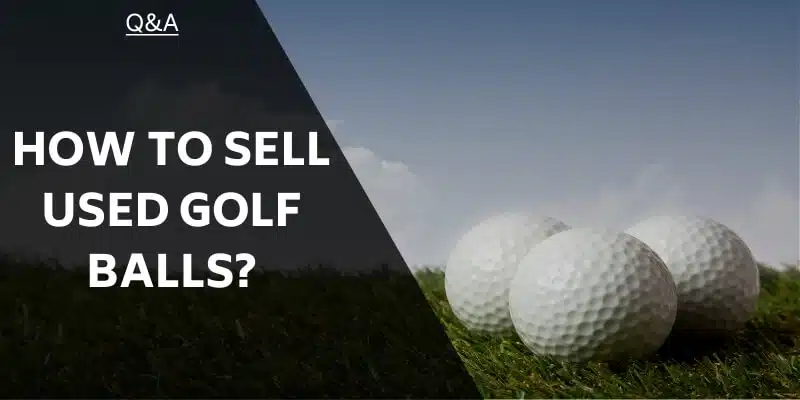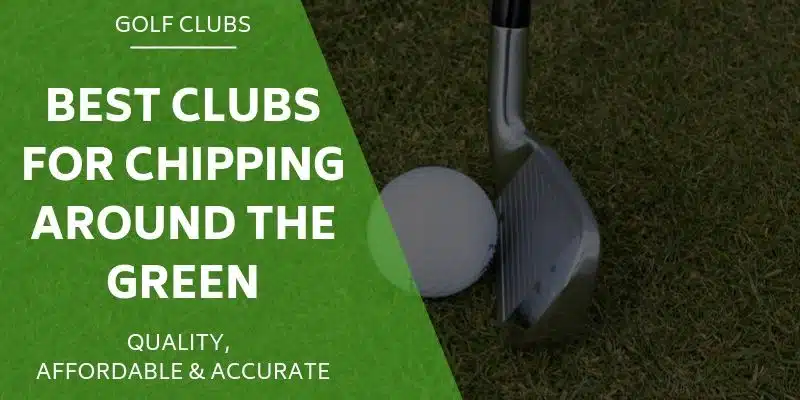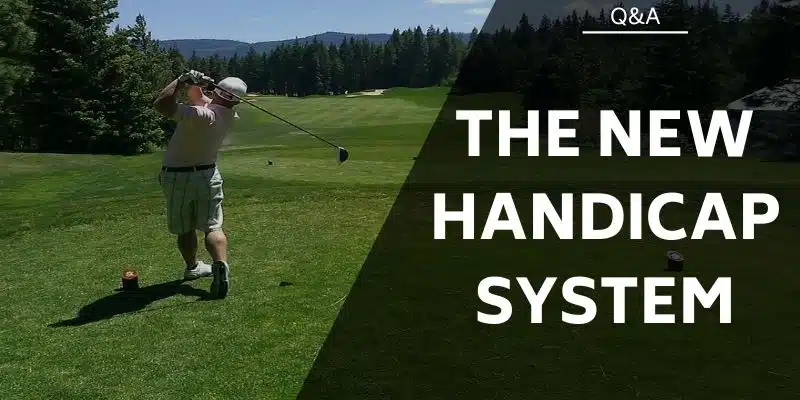Offset golf clubs are a specific type of golf club designed with a feature that sets them apart.
So, what are offset golf clubs? Offset in golf clubs refers to the design in which the clubface is set back from the shaft. Essentially, the clubface isn’t aligned directly with the shaft but is instead set slightly behind it. This unique design characteristic is what makes offset golf clubs beneficial to certain types of players. By providing golfers with a little more time during their swing, offset golf clubs can significantly enhance the quality of their shot.
Golf clubs with an offset feature play a crucial role in the golfing world. They are important for golfers struggling with specific issues such as slicing or mis-hits. If you don’t fully understand them, then you won’t be able to best select the right clubs for your game.
Drawing from my decades of golfing experience and now years of experience writing about golf clubs, offset clubs can significantly affect a player’s performance, providing the right balance, improved control, and decreased slicing.
Read on to learn:
- Differences between offset and regular golf clubs
- Benefits of offset golf clubs
- Disadvantages of offset golf clubs
- Features of offset golf clubs
- How to choose the right offset golf clubs for you
- Tips for playing with offset golf clubs
- Who should and shouldn’t use offset golf clubs
Offset vs. Non-Offset Golf Clubs
| Offset Golf Clubs | Non-Offset Golf Clubs |
| Clubface is set behind the shaft | Clubface is aligned directly with the shaft |
| Provides more time to square the clubface | Requires quick squaring of clubface |
| Ideal for players struggling with slicing | Suitable for experienced players with controlled swing |
| Promotes a high and straight ball flight | Promotes a lower trajectory with potential for intentional fades and draws |
Benefits of Offset Golf Clubs

Here are the benefits of offset golf clubs:
- Reduce slicing
- Increase accuracy
- Enhance ball flight
- Improve distance control
- Enhance forgiveness
Let’s dive more fully into what does offset do on a golf club?
The main advantage of offset golf clubs, or offset irons, is their ability to reduce slicing, a common problem for many golfers. The extra fraction of a second provided by the clubface being set back allows golfers to square up at impact more efficiently, thereby reducing the chances of slicing the ball.
Further, offset clubs offer increased accuracy. Promoting a squarer clubface at impact makes the ball more likely to go in the direction the golfer intends.
Offset clubs also enhance the ball flight. They encourage a higher trajectory, allowing the ball to get airborne more easily, which is especially beneficial for players with slower swing speeds.
Improved distance control is another notable benefit. A better ball flight and reduced slice translate into more control over the distance the ball travels.
Finally, offset golf clubs enhance forgiveness. Even with off-center hits, these clubs provide a better outcome than their non-offset counterparts. This feature is particularly beneficial for high-handicappers and beginners.
Using offset golf clubs initially, I really saw a reduction in my tendency to slice.
Disadvantages of Offset Golf Clubs
While offset golf clubs offer numerous advantages, they come with a few drawbacks. Here are the disadvantages:
- Promotes draws or hooks
- Promotes pulls
- More difficult to shape shots
One potential disadvantage is their tendency to promote a draw or a hook for players already predisposed to these shots. Golfers with a quick tempo or fast swing speed may also struggle with offset clubs, as the added time to square the clubface could lead to pulls or hooks.
Additionally, for highly skilled players seeking to shape their shots or control their trajectory, offset clubs might limit their ability due to their inherent design promoting a higher ball flight.
I found that as my skill improved and I transitioned into a lower handicapper, my offset irons sometimes caused an undesired hook. I eventually moved back to normal irons.
Features of Offset Golf Clubs

There are several key features that define offset golf clubs:
- Hosel Design: The hosel is the club’s area where the shaft is attached. The hosel is designed in offset clubs so the clubhead sits slightly behind the shaft.
- Clubhead Size and Shape: Offset clubs typically have larger clubheads. The clubface is generally broader, enhancing forgiveness on mis-hits.
- Offset Amount: This is the extent to which the clubface sits behind the shaft. More offset means more time to square the clubface.
- Clubface Angle: Offset clubs usually have a slightly closed clubface angle, promoting a straight or draw-biased shot.
- Shaft Length and Flex: The length and flex of the shaft in an offset club may differ from standard clubs to accommodate the different design. A longer shaft allows for more whip and flex, promoting a higher trajectory and increased distance. The flex can also help with shot shaping, allowing more experienced players to hit draws or fades.
Types of Offset Golf Clubs
Offset clubs come in different types to suit the various needs of golfers. These include:
Offset Drivers
These are beneficial for golfers who struggle with a slice. The offset design allows the golfer more time to square the clubface, promoting a straighter drive.
Offset Fairway Woods
Like the drivers, offset fairway woods aim to correct slicing issues. They can be particularly helpful when achieving a longer carry on the fairway.
Offset Hybrids
These clubs combine the benefits of woods and irons, offering more forgiveness than a conventional iron but providing the same loft. The offset design aids in reducing the slice and promoting a high, straight flight.
Offset Irons
So, what is offset in golf irons? These are commonly used by high-handicappers or those with a slice. They offer more forgiveness and promote a higher launch. Offset irons should not be mistaken for game improvement irons.
Offset Wedges
Offset wedges can help golfers control their shot trajectory better, making them particularly useful for approach shots and chips around the green.
Remember, the right type of offset club for you depends on your specific needs, playstyle, and the areas you wish to improve in your game. You might find that a combination of standard and offset clubs works best for your bag.
Read more: Check out our definitive list of the best Cobra irons available.
How to Choose the Right Offset Golf Clubs
Choosing the right offset golf clubs involves several considerations:
- Consider Your Swing Type: Offset clubs are typically designed to help those who tend to slice the ball. If you hook the ball or generally hit it straight, offset clubs may not be your best choice.
- Analyze Your Ball Flight Pattern: Offset clubs can influence the ball flight. They can help generate a higher ball flight, benefiting those struggling with getting the ball airborne or those playing on softer courses.
- Determine Your Budget: Offset clubs can range in price, much like any other golf club. Determine what you’re willing to spend before starting your search.
- Choose the Right Set Makeup: Not every club in your bag necessarily needs to be offset. Perhaps you only slice your driver but hit your irons straight. In that case, an offset driver could be all you need. Just make sure your irons are real and not clone irons!
- Try Before You Buy: Try out the clubs before purchasing them. This will give you a feel for how the clubs perform and whether they suit your swing.
Tips for Playing with Offset Golf Clubs

- Proper Setup and Alignment: Offset clubs require a slightly different setup and alignment. Practice your setup to ensure you’re not unintentionally aiming to the right (for right-handed golfers).
- Adjusting to the Offset: It can take time to adjust to the feel and look of offset clubs. Give yourself ample time to practice and get used to them before heading out onto the course.
- Practicing with Offset Clubs: Practice makes perfect. Spend time on the range working with your new clubs, paying particular attention to the ball’s flight and how it differs from your previous clubs.
- Choosing the Right Ball: Pairing your offset clubs with the right golf ball can enhance their performance. A ball with a softer feel might work better with offset clubs, as it can provide more control and a better spin rate.
Keep in mind, like any new piece of equipment, it can take time to adjust and see the benefits. Be patient with yourself as you learn to use your new clubs.
Who Should and Who Shouldn’t Use Offset Golf Clubs

Who Should Use Offset Golf Clubs?
Golfers who struggle with a slice or often hit the ball off the club’s heel can benefit from using offset golf clubs. They can also be advantageous for golfers with slower swing speeds, as they promote a higher ball flight.
Who Shouldn’t Use Offset Golf Clubs?
Golfers who already hit the ball straight or struggle with a hook might not benefit from offset clubs. Additionally, advanced golfers who desire more control over their shot shape may find offset clubs limit their ability to work the ball.
Offset Golf Clubs: Frequently Asked Questions
Who Should Use Offset Golf Clubs?
As mentioned earlier, golfers struggling with a slice or hitting the ball off the heel could greatly benefit from offset golf clubs.
What Is The Difference Between Offset And Non-Offset Golf Clubs?
The primary difference is in the design. Offset clubs have the clubface set back from the shaft, while in non-offset clubs, the clubface aligns directly with the shaft.
How Much Offset Is Too Much?
The amount of offset "too much" depends on the golfer. It might be too much if you find the club uncomfortable to use, or if it's not helping correct your slice or other issues.
Can Offset Golf Clubs Be Used By High Handicappers?
Absolutely! In fact, offset clubs can be especially beneficial to high handicappers who often struggle with consistency in their shots.
Are Offset Clubs Legal For Tournament Play?
Yes, offset clubs are perfectly legal for tournament play, provided they conform to the rules laid out by the USGA or the ruling golf body of the tournament.
How Do I Know If I Need Offset Clubs?
If you frequently struggle with slices or hit the ball off the heel of the club, you may benefit from trying offset clubs. Speaking with a golf professional or club fitter for advice can also be helpful.
Are Irons With Less Offset Harder To Hit?
It's not inherently more difficult to hit irons with less offset, but it might be more challenging for some golfers, especially those who tend to slice the ball or are late in squaring the clubface at impact.
The offset design provides additional time for the golfer to turn the clubface back to a square position, which can help achieve a straighter shot. If you remove this extra time by using clubs with less offset, you may need a faster hand turn to square the face, which can be more difficult for some golfers.
Ultimately, it depends on your swing mechanics and personal comfort.
Do Pros Use Offset Irons?
Some professional golfers use offset irons, but it's relatively uncommon. Pros typically have highly skilled swings that allow them to precisely control the clubface at impact.
They don't necessarily need the additional time that an offset club provides to square the clubface. Some professionals might prefer a club with a little offset if they want to shape their shots specifically, but generally, pro-level irons have a minimal offset.
There are lots of brilliant iron manufacturers out there.
Can Offset Clubs Cause A Hook?
While offset clubs are designed to help correct a slice, too much offset can indeed contribute to a hook.
This happens when the clubface is closed (turned to the left for a right-handed golfer) at impact, causing the ball to curve aggressively to the left.
Offset clubs give players more time to square the clubface, but if a player already tends to close the clubface early, an offset could exacerbate this, resulting in a hook.
How Does Offset Affect Putting?
In putting, offset can influence the alignment of the putter and the golfer's view of the ball. An offset putter helps many golfers align the putter face more accurately to the target, allowing for a better view of the ball about the target line.
However, too much offset might lead to pushing the putt to the right, as it can cause the hands to lead too far forward. As with other clubs, whether or not offset benefits you're putting largely depends on your individual stroke and personal comfort.
Check out our list of the most forgiving irons on the market.
Conclusion
So, what is offset in golf clubs? We hope you have a better understanding!
Understanding the concept of offset in golf clubs can make a significant difference in your golf game. If you struggle with a slice, hit the ball off the heel, or just want a little more time to square the clubface at impact, offset golf clubs might be the answer. These clubs have a unique design that gives you that extra fraction of a second to correct your clubface angle and potentially send your ball down the fairway more accurately.
While offset clubs may not be for everyone, particularly those who already have a straight shot or for players who struggle with a hook, they can be a game-changer for many golfers. The key is to test out different clubs and see what works best for your unique swing and game style.
The world of golf is full of different club designs aimed at helping improve your performance on the course. The best thing you can do is experiment with various clubs and configurations to see which ones suit your game best. Don’t be afraid to ask for advice from a golf professional or club fitter – their knowledge and experience can be invaluable in choosing the right equipment.
Finally, remember that clubs are an important part of the game but aren’t a magic fix. Practice, good technique, and understanding your game are just as, if not more important, to improving your golf score.
So, why not give offset golf clubs a try? You might just find they’re the secret weapon you’ve been looking for to improve your game. I found that offset clubs were well-suited to my game when I needed more forgiveness. As I got better, they became less needed.
Sam has been playing golf for over 20 years and founded Impact Golfer. As a teenager, he discovered his love for the game using his grandad’s clubs, including a wooden driver. As a golf obsessive, Sam plays whenever possible, regularly competing in matchplay with his friends and in tournaments at his local club. He's fortunate to have a close friend who is a club pro– he has tested almost every type of equipment on the market (no freebies yet).
Sam has a handicap index of 13 and likes playing at the Metro Golf Centre near his home in London. He putts with a Taylormade Spider because Rory uses it but regrets selling an old Scotty Cameron putter on eBay.
- Best score: 94
- Favorite club: TaylorMade Stealth Driver
- Favorite putter: Bought a TaylorMade Spider because Rory uses it, but spend most of my time on greens yearning for the Scotty Cameron I sold on eBay.
- Favorite food at the turn: Baguette. Sausages. Bacon. HP Sauce.









